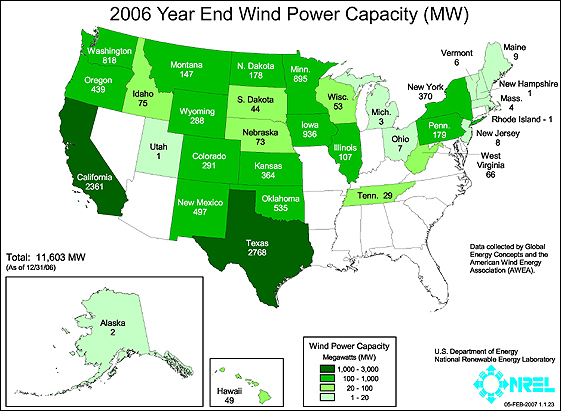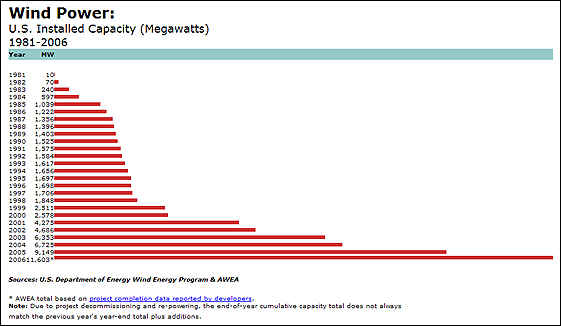|
|
Wind Power |
||||||||
|
The distribution of the wind power across the United States. As you can see, Alaska is prime location for a few coastal wind farms. The following chart is the installed wind capacity broken down by state. It is useful to compare these charts to see who is taking advantage of the resources they have available. http://www.azsolarcenter.com/images/uswindmap.gif
http://www.eere.energy.gov/windandhydro/windpoweringamerica/wind_installed_capacity.asp The overall trend of wind use in the United States is on the rise. This is largely due to a feeling of need for a clean, renewable form of energy and the decrease cost of wind production. Wind energy is projected to pass coal as being the more economically efficient fuel very soon with both being cheaper than oil. Its increasing growth and decreasing cost per kWh are promising for the future of this environmentally friendly renewable energy source. Wind power generating capacity increased by 27% in 2006 and is expected to increase an additional 26% in 2007, proving wind is now a mainstream option for new power generation, according to a market forecast released by the American Wind Energy Association (AWEA). http://www.eere.energy.gov/windandhydro/windpoweringamerica/wind_installed_capacity.asp Chart from the National Renewable Energy Laboratory (NREL)
Although, even with all of the positive aspects, there are several constraints on the use of wind power for energy that limit its about to roughly 20% of the total grid capacity:
Unfortunately there are some negative environmental impacts from wind power as well:
As you can see, wind power has several drawbacks. This leads to a debate from both sides of the issue. |
Kevin Taylor - Spring 2007
Contact: fskdt3@uaf.edu
Physics 212 Web Project
Dr. D. Newman
University of Alaska Faribanks




